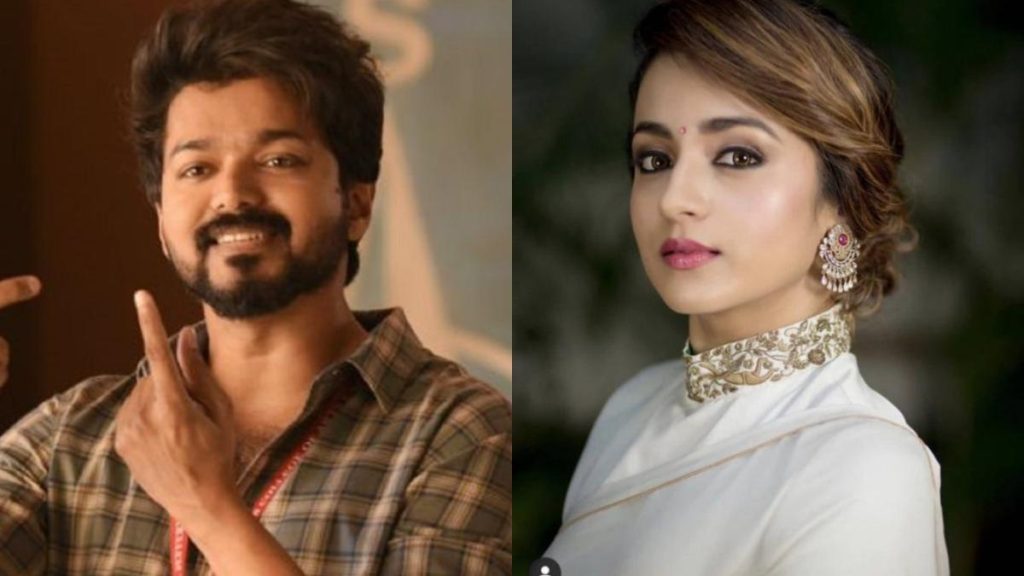In the vibrant tapestry of Indian cinema, certain film series emerge as cultural phenomena, transcending the boundaries of mere entertainment to become a part of the social fabric. Among these, the Thalapathy series stands as a towering testament to cinematic excellence and mass appeal. As whispers and rumors coalesce into concrete anticipation, the film industry and fans alike are abuzz with excitement for the latest installment: “Thalapathy 67.”
As we embark on this exploration, we acknowledge the towering achievements of its predecessors, each contributing to the series’ lore, setting the stage for what could be an unparalleled cinematic experience. Join us as we journey through the heart of this cinematic marvel, piecing together the puzzle that is “Thalapathy 67,” a film shrouded in mystery yet radiant with potential.
The Legacy of Thalapathy

“The Legacy of Thalapathy” is a topic that encompasses the cultural impact, cinematic evolution, and enduring appeal of a highly successful and beloved film series in Indian cinema. The series, often centered around its lead actor, known for his charismatic performances and affectionately referred to as “Thalapathy” (Commander) by his fans, has become a cornerstone in the fabric of contemporary Indian cinema. Here’s an exploration of this legacy:
- Cinematic Milestones: The Thalapathy series has been marked by several films that not only achieved box office success but also pushed the boundaries of storytelling and technical excellence in Indian cinema. These films often set new trends, be it in terms of narrative style, visual effects, or thematic depth.
- Cultural Phenomenon: Beyond the confines of cinema halls, the Thalapathy series has had a profound cultural impact. It has influenced fashion, language, and popular culture, with dialogues and scenes from the movies becoming part of everyday vernacular. This influence is a testament to the series’ deep-rooted connection with its audience.
- Iconography and Recurring Themes: The films are known for their unique iconography – symbols, motifs, and themes that have become synonymous with the series. These might include specific character archetypes, moral dilemmas, or visual styles that recur across the series, contributing to its distinctive identity.
- Fan Following and Community Engagement: One of the most remarkable aspects of the Thalapathy legacy is its fan following. Passionate fans have formed communities, both online and offline, celebrating the series through fan art, forums, and gatherings. This fan base is not just a passive audience but an active participant in sustaining and spreading the series’ legacy.
- Star Power and Performances: The lead actors, especially the one known as Thalapathy, have been pivotal to the series’ success. Their performances, charisma, and evolution as actors have drawn audiences to the theaters, making each release a highly anticipated event.
- Critical Acclaim and Box Office Success: While the series has been a commercial success, it has also received critical acclaim for its storytelling, direction, and performances. The balance of commercial and critical success is a rare achievement and speaks volumes about the series’ quality and appeal.
- Influence on the Film Industry: The Thalapathy series has set high standards in various aspects of filmmaking, inspiring a generation of filmmakers and actors. It has contributed to a new wave of storytelling and technical innovation in the industry.
- Legacy Beyond Cinema: The impact of the Thalapathy series extends beyond cinema. It has inspired merchandise, literature, and even academic studies, making it a multidimensional phenomenon.
Anticipated Elements of Thalapathy 67
The anticipation surrounding “Thalapathy 67” is palpable, fueled by the legacy of its predecessors and the excitement of fans and industry insiders alike. Here are some key elements that are eagerly awaited in this upcoming installment:
- Directorial Vision:
- Acclaimed Director: With a reputed filmmaker at the helm, expectations are high for a unique directorial style and vision. This section should explore the director’s previous works and how their distinctive approach might shape Thalapathy 67.
- Creative Innovations: Speculate on potential new filmmaking techniques or narrative styles the director might bring to this project.
- Star-Studded Cast and Crew:
- Lead Actors: Discuss the rumored or confirmed cast, especially the lead actor, whose association with the title “Thalapathy” has been a major draw for the audience.
- Supporting Cast and Newcomers: Highlight any notable supporting actors or exciting new talents joining the franchise.
- Crew: Mention key crew members, such as the cinematographer, music director, and others who are crucial to the film’s production.
- Storyline and Plot Theories:
- Narrative Speculations: Dive into fan theories, rumors, or any leaked snippets about the plot. How might this film continue the Thalapathy legacy?
- Genre and Themes: Discuss the expected genre – will it be action, drama, romance, or a blend? What themes, such as social issues, love, or revenge, might be central to the storyline?
- Music and Soundtrack:
- Composer’s Role: Music often plays a pivotal role in the Thalapathy series. Talk about the composer and their previous works, speculating on the style and feel of the soundtrack.
- Lyricists and Singers: Mention the lyricists and singers who might contribute to making the film’s music memorable.
- Cinematography and Visual Style:
- Visual Aesthetics: Discuss expectations regarding the film’s visual style. Will it carry a signature look or experiment with new visual themes?
- Technical Aspects: Talk about any advanced technology or special effects that might be used in the movie.
- Cultural Elements and Setting:
- Cultural Representation: Consider how the film might portray cultural elements, whether it’s through its setting, characters, or traditions.
- Location and Era: Discuss the anticipated setting – is it modern, historical, or a blend? What locations might be featured?
- Marketing Teasers and Promotional Content:
- Promotional Strategy: Speculate on the marketing approach. How might the film be promoted through trailers, posters, and social media?
- Fan Engagement: Consider how the promotional content might be designed to engage the fan base and create buzz.
- Expectations and Comparisons:
- Comparison with Previous Films: How might Thalapathy 67 compare to its predecessors in terms of scale, storytelling, and overall impact?
- Industry Expectations: Discuss what industry experts and critics are anticipating from this film.
- Innovations and Surprises:
- Breaking New Ground: Speculate on any groundbreaking elements the film might introduce, be it in storytelling, character development, or technical aspects.
Production Insights

The production phase of “Thalapathy 67” is a critical aspect of its creation, encompassing various elements from pre-production planning to post-production polishing. Here’s a look into what we might expect and explore regarding the production of this highly anticipated film:
- Pre-Production Planning:
- Script Development: Discuss the evolution of the script, including any rewrites or notable collaborations that shaped the story.
- Casting Process: Explore how the casting decisions were made, including auditions, screen tests, and final selections.
- Filming Locations and Set Design:
- Choosing Locations: Provide insights into the selection process of filming locations. Are they shooting in new, exotic locales or familiar settings?
- Set Construction and Design: Detail the efforts put into set construction, including any challenges faced in recreating specific eras or environments.
- Production Challenges:
- Handling of Complex Scenes: Discuss the handling of action sequences, crowd scenes, or other complex shots.
- Navigating Logistics: Highlight any logistical challenges, such as coordinating large casts, handling intricate sets, or shooting in remote locations.
- COVID-19 Protocols: If relevant, mention how the production navigated the challenges posed by the COVID-19 pandemic, including safety protocols and filming delays.
- Technological Use and Innovations:
- Cutting-Edge Technology: Discuss the use of advanced technology in filming, such as drone cinematography, CGI, or VFX.
- Innovative Techniques: Highlight any innovative techniques used in production, perhaps drawing from international filmmaking styles or pioneering new methods.
- Budget and Funding:
- Budget Allocation: Give an overview of the film’s budget and how it was allocated across various production elements.
- Funding Sources: Mention the sources of funding, including any notable producers or production houses backing the project.
- Behind-the-Scenes Dynamics:
- Director’s Approach: Delve into the director’s approach during the shoot, their interaction with cast and crew, and how they brought the script to life.
- Cast and Crew Synergy: Explore the dynamics between cast members and between the cast and crew, contributing to the film’s collaborative environment.
- Post-Production Efforts:
- Editing Process: Shed light on the editing process, including any unique challenges faced in this phase.
- Sound Design and Scoring: Discuss the sound design, background scoring, and how they complement the film’s narrative.
- Special Effects and Finishing Touches: Highlight the work done in adding special effects and other finishing touches that enhance the film’s visual appeal.
- Environmental and Social Responsibility:
- Sustainability Practices: If applicable, mention any efforts made towards sustainable and environmentally friendly production practices.
- Community Engagement: Discuss how the production may have engaged with local communities, especially if shooting in sensitive or unique locations.
Marketing and Public Reception of Thalapathy 67

The marketing of “Thalapathy 67” and its reception by the public are pivotal in determining the film’s success. This section explores the strategies used to promote the film and gauges the public’s response.
1. Marketing Strategies
- Teaser and Trailer Releases: Discuss the impact of the film’s teasers and trailers. How did they build anticipation? Analyze the content, release timing, and audience response.
- Social Media Campaigns: Examine the use of social media platforms for marketing. Highlight any innovative campaigns, interactive sessions with the cast, or unique hashtags that trended.
- Celebrity Endorsements and Appearances: Mention any promotional events or appearances by the cast and crew. How did these events contribute to building hype?
2. Merchandising and Brand Partnerships
- Merchandise: Discuss any official merchandise released, such as apparel, collectibles, or digital content.
- Brand Tie-Ins: Analyze partnerships with brands for co-marketing. How have these partnerships been used to reach a wider audience?
3. Publicity Events
- Press Conferences and Interviews: Mention key press events and notable interviews that provided insights into the film.
- Fan Events: Highlight any special events organized for fans, such as meet-and-greets, contests, or early screenings.
4. Public Reception and Expectations
- Fan Anticipation: Gauge fan excitement and expectations through social media, fan forums, and surveys.
- Media Buzz: Assess the buzz around the film in entertainment media. What are the speculations and expectations from industry experts?
5. Comparative Analysis with Previous Thalapathy Films
- Box Office Predictions: Compare the pre-release buzz of “Thalapathy 67” with that of its predecessors. Are box office predictions higher or lower?
- Critical Expectations: How do film critics and analysts expect “Thalapathy 67” to perform based on its marketing and initial reception?
6. Impact of Marketing on Ticket Sales
- Advance Bookings: Discuss the trend in ticket sales, especially advance bookings. How does this compare to previous films in the series?
- International Appeal: Consider the film’s marketing impact on international markets. Is there a significant interest in non-traditional markets for Indian cinema?
7. Community and Cultural Impact
- Fan Community Engagement: Evaluate how the marketing strategies have engaged the existing fan community and attracted new audiences.
- Cultural Conversations: Has the film sparked any significant cultural discussions or been featured in non-cinematic media?
The Broader Impact and Future Predictions
“Thalapathy 67” is not just a film; it’s a phenomenon with the potential to leave a lasting imprint on the film industry and beyond. This section explores the broader implications of the film’s release and what the future might hold.
1. Influence on the Film Industry
- Trendsetting Potential: Analyze how “Thalapathy 67” might set new trends in filmmaking, from narrative techniques to technical innovations.
- Impact on Genre Evolution: Discuss the film’s potential to influence the evolution of its genre, be it action, drama, or a hybrid.
- Raising Industry Standards: Consider how the film’s production values and storytelling might raise the bar for future productions.
2. Economic Impact
- Box Office Performance: Project the film’s potential box office impact, both domestically and internationally.
- Contribution to Local Economies: Highlight how the film’s production and release might have boosted local economies, particularly in filming locations.
3. Cultural and Social Reverberations
- Reflection of Social Themes: Discuss how the film might resonate with contemporary social issues or cultural themes, potentially sparking discussions or awareness.
- International Cultural Exchange: Explore the film’s role in promoting cultural exchange, especially if it garners international attention.
4. Future of the Thalapathy Series
- Legacy Continuation: Speculate on how “Thalapathy 67” might pave the way for future installments or spin-offs.
- Maintaining Relevance: Consider the strategies the series might employ to stay relevant and appealing to new generations of viewers.
5. Technological Advancements and Adaptations
- Future Tech in Filmmaking: If “Thalapathy 67” incorporates groundbreaking technology, discuss how this might inspire future film productions.
- Adaptation to Changing Media Landscapes: Analyze how the film and its marketing adapt to the rapidly changing media landscape, including streaming platforms and digital media.
6. Audience and Fan Base Evolution
- Expanding the Fan Base: Explore the potential for “Thalapathy 67” to attract a broader, more diverse audience.
- Engagement with Younger Audiences: Discuss the film’s appeal to younger demographics and how it might shape their cinematic tastes.
7. Predictions and Speculations
- Long-Term Impact: Speculate on the long-term impact of “Thalapathy 67” on its stars’ careers, the film industry, and its audience.
- Critics vs. Audience Reception: Predict how critics might receive the film compared to the audience.
Must Read:
Conclusion
“Thalapathy 67” embodies more than the sum of its parts. It symbolizes a rich tapestry of storytelling, an amalgamation of art and technology, and a mirror reflecting societal narratives and aspirations. As the film prepares to make its mark on the silver screen, it invites us to be part of a journey that transcends the boundaries of traditional cinema, promising a cinematic experience that will be remembered and discussed for years to come.

